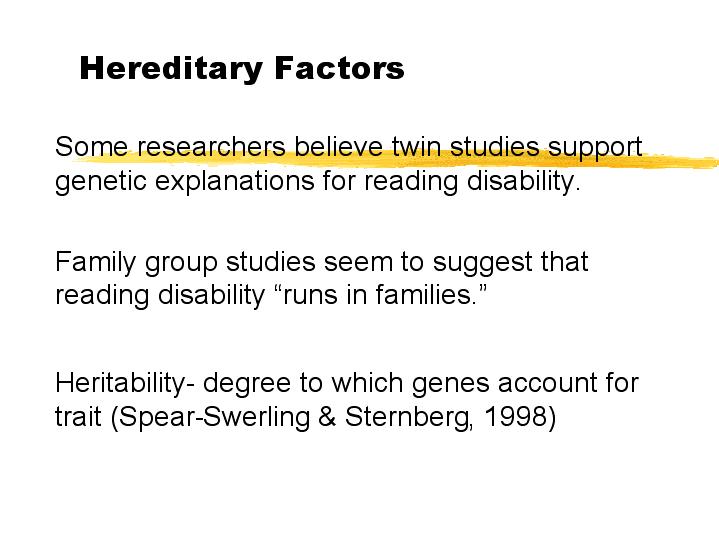Slide 13 of 31
Notes:
Neurological Difficulties
Brain damage - Minimal brain damage - Hard and soft signs
Diagnosis in and of itself provides little useful information to teachers. Two popular and well known therapies theories arisen Delacato proposed “lack of n neurological organization” caused reading / learning problems Proposed therapy of patterning. Cross pattern walking and creeping, sleep patterning. These patterning activities promote proper neural connections to occur in the central nervous system because of stimulation to the sensory system. Doesn’t work
Orton (1937) proposed a theory of delayed / mixed cerebral dominance “Strephosymbolia “ “twisted symbols” Perceived words properly on one side of the brain and then perceived the mirror image and would respond to the mirror image. Lack of cerebral dominance has nothing to do with reading problems.
ADD and ADHD impulsivity, distractibility, inattentive, short attention span easity frustrated and with H excessive motor activity. Chicken and egg.
“If I could just get Johnny to pay attention I know he would learn or If I could just get Johnny to learn I know he would pay attention.” More the latter
Ayres theory of sensory integration - Problems in the neurological connections of the brain stem are responsible for learning problems thus stimulate position awareness and balancing systems of the body would improve reading
Heredity - Twin studies suggest reading disabilities may have a gnetic origin. Higher proportion of dyslexic readings identical than fraternal and tends to run in families
Emotional Factors - Mild emotional problems no but more severe yes would certainly impact as a secondary cause















